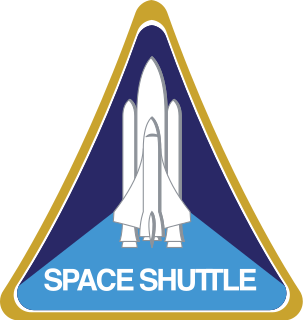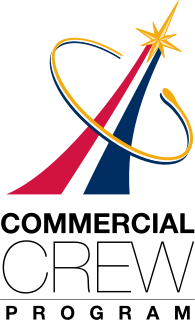Notes
Currently, CTS-1 holds the designation USCV-2, as it is scheduled to be the second operational flight of the Commercial Crew Program, following USCV-1 which will be flown by a SpaceX Crew Dragon spacecraft [3] . Nominally, Commercial Crew missions will rotate spacecraft between Crew Dragon and Starliner, although, due to the issues on Boeing's Orbital Flight Test which has most likely pushed the companies Crew Flight Test into 2021, it is unclear weather Starliner will be ready in time to fly on USCV-2, meaning the designation may go to the second operational flight of Crew Dragon [4] .
As this flight marks the first operational flight of Starliner, a Russian cosmonaut will most likely not be on board as Roscosmos has stated they do not want to put Russian cosmonauts on either Starliner or Crew Dragon until they have flown successful USCV flights. The fourth seat will probably be taken by a third NASA astronaut, like what happened with USCV-1 [5] .

The Space Shuttle program was the fourth human spaceflight program carried out by the National Aeronautics and Space Administration (NASA), which accomplished routine transportation for Earth-to-orbit crew and cargo from 1981 to 2011. Its official name, Space Transportation System (STS), was taken from a 1969 plan for a system of reusable spacecraft of which it was the only item funded for development.

Edward Michael "Mike"/"Spanky" Fincke is an American astronaut who formerly held the American record for the most time in space. His record was broken by Scott Kelly on October 16, 2015. In January, 2019 Fincke was selected to fly on the first crewed flight of Boeing's CST-100 Starliner, making Fincke the first astronaut since John Young to fly on 3 different launch vehicles into orbit.

Soichi Noguchi is a Japanese aeronautical engineer and JAXA astronaut. His first spaceflight was as a Mission Specialist aboard STS-114 on 26 July 2005 for NASA's first "return to flight" Space Shuttle mission after the Columbia disaster. He was most recently in space as part of the Soyuz TMA-17 crew and Expedition 22 to the International Space Station (ISS), returning to Earth on 2 June 2010. He is the fifth Japanese astronaut to fly in space and the fourth to fly on the space shuttle.

Sunita Lyn Williams is an American astronaut and United States Navy officer who formerly held the records for total spacewalks by a woman (seven) and most spacewalk time for a woman. Williams was assigned to the International Space Station as a member of Expedition 14 and Expedition 15. In 2012, she served as a flight engineer on Expedition 32 and then commander of Expedition 33.

Shannon Walker is an American physicist and a NASA astronaut selected in 2004, she launched on her first mission into space on 25 June 2010 onboard Soyuz TMA-19 and has currently logged 163 days in space over one long-duration mission to the international space station.

Akihiko Hoshide is a Japanese engineer and JAXA astronaut. On August 30, 2012, Hoshide became the third Japanese astronaut to walk in space.

Andrei Ivanovich Borisenko is a Russian cosmonaut. He was selected as a cosmonaut in May 2003, and is a veteran of two long duration missions to the International Space Station.

Kjell Norwood Lindgren is a current NASA astronaut. Lindgren was selected in June 2009 as a member of the NASA Astronaut Group 20. He launched to the International Space Station (ISS) as part of Expedition 44/45 on 22 July 2015.

The Boeing CST-100 Starliner is a crew capsule manufactured by Boeing as its participation in NASA's Commercial Crew Development (CCDev) program. Its primary purpose is to transport crew to the International Space Station (ISS) and to private space stations such as the proposed Bigelow Aerospace Commercial Space Station.

The Commercial Crew Program is a human spaceflight program that is funded by the U.S. government and administered by NASA through which private vendors are to develop and operate crew vehicles to carry US and international astronauts to and from the International Space Station (ISS).

Anatoli Alekseyevich Ivanishin is a Russian cosmonaut. His first visit to space was to the International Space Station on board the Soyuz TMA-22 spacecraft as an Expedition 29 / Expedition 30 crew member, launching in November 2011 and returning in April 2012. Ivanishin was the Commander of the International Space Station for Expedition 49.

NASA Astronaut Group 21 In 2011 NASA opened applications for Astronaut Group 21. The team was announced in June 2013 after a year and a half long search. With four men and four women, the class of 2013 had the highest percentage of female finalists. According to NASA astronaut Kathleen Rubins, "it's… a reflection of how many really talented women are in science and engineering these days." NASA received a total of over 6,300 applications, which made it the second highest number received at the time.

Dragon 2 is a class of reusable spacecraft developed and manufactured by American aerospace manufacturer SpaceX as the successor to the Dragon 1 cargo spacecraft. The spacecraft launches atop a Falcon 9 Block 5 rocket and returns to Earth via an ocean splashdown. Unlike its predecessor, the spacecraft can dock itself to the ISS instead of being berthed. It has two variants; Crew Dragon, a human-rated capsule capable of ferrying up to seven astronauts, and Cargo Dragon, an updated replacement for the original Dragon spacecraft. Crew Dragon is equipped with an integrated launch escape system in a set of four side-mounted thruster pods with two SuperDraco engines each. The spacecraft features redesigned solar arrays and a modified outer mold line compared to the original Dragon, and possess new flight computers and avionics. As of March 2020, four Dragon 2 spacecraft have been manufactured ; a test article named Dragonfly and three flightworthy vehicles, one of which was destroyed in an engine test.

The Boeing Orbital Flight Test was the first orbital mission of the CST-100 Starliner spacecraft, conducted by Boeing as part of NASA's Commercial Crew Program. The mission was planned to be an eight-day test flight of the spacecraft, involving a rendezvous and docking with the International Space Station (ISS), and a landing in the western United States. The mission was successfully launched on 20 December 2019 at 11:36 UTC or 6:36 AM EST, however an issue with the spacecraft's mission elapsed time (MET) clock occurred 31 minutes into flight. This anomaly caused the spacecraft to burn into an incorrect orbit, preventing a rendezvous with the ISS. The mission was reduced to just two days, with the spacecraft successfully landing at White Sands Missile Range on 22 December.

Boeing Crew Flight Test will be the first crewed mission of the Boeing CST-100 Starliner to the International Space Station, and the third orbital flight test of the Starliner overall after the two uncrewed flight tests, OFT-1 and OFT-2. Its launch date is currently unclear. It is planned to deliver three to four astronauts to the ISS for five months.

USCV-1, also known as SpaceX Crew Dragon-1 and abbreviated as Crew-1 or Crew-One, will be the first crewed operational flight of SpaceX's Crew Dragon spacecraft and its third overall orbital flight. As of April 2020, the mission is expected to launch in August 2020 and transport four members of the Expedition 63/64 crew to the International Space Station.

Ivan Viktorovitch Vagner is a Russian engineer and cosmonaut who was selected in October 2010. He graduated from the Baltic State Technical University in 2008, before working as an engineer for RKK Energia.

Boeing Starliner spacecraft 3, also known as Calypso is a Boeing CST-100 Starliner spacecraft built on operated by Boeing on behalf of NASA under the Commercial Crew Program. On 20 December 2019 Calypso launched on the Boeing-Orbital Flight Test mission, an uncrewed test flight of Starliner to the International Space Station.. The spacecraft was scheduled to dock to the ISS and then return to Earth following a week in space, although due to several software issues the spacecraft was unable to rendezvous with the station and landed following two days in space, this resulted in Boeing needing to schedule a second Orbital Flight Test which is currently targeted for October 2020

Axiom Space Dragon mission 1 is a planned SpaceX Crew Dragon mission to the International Space Station, operated by SpaceX on behalf of Axiom Space. The flight will launch in late 2021 and see one professionally trained astronaut hired by Axiom Space and three Space tourists fly to the ISS for an approximately eight day stay aboard the orbiting outpost..



















